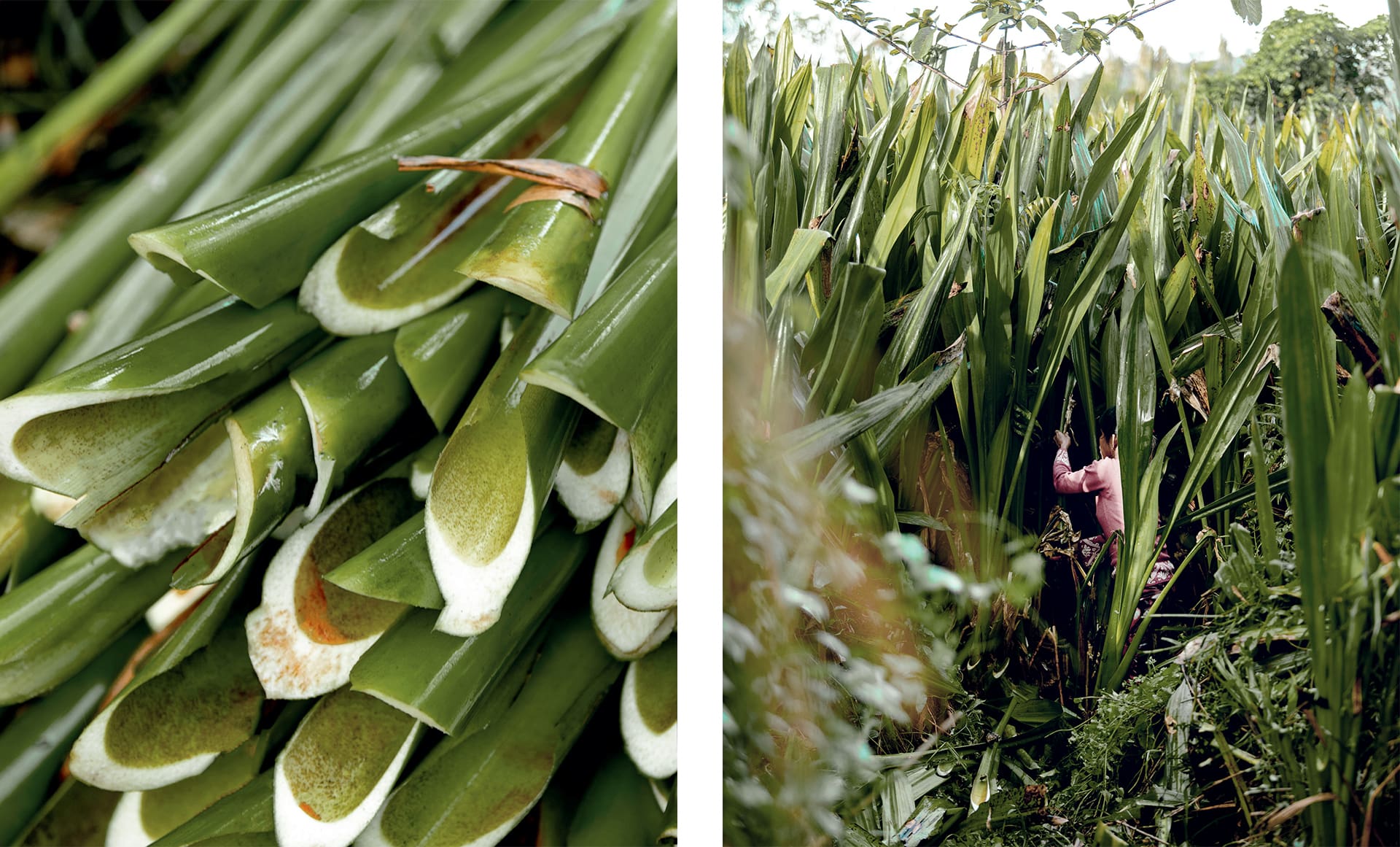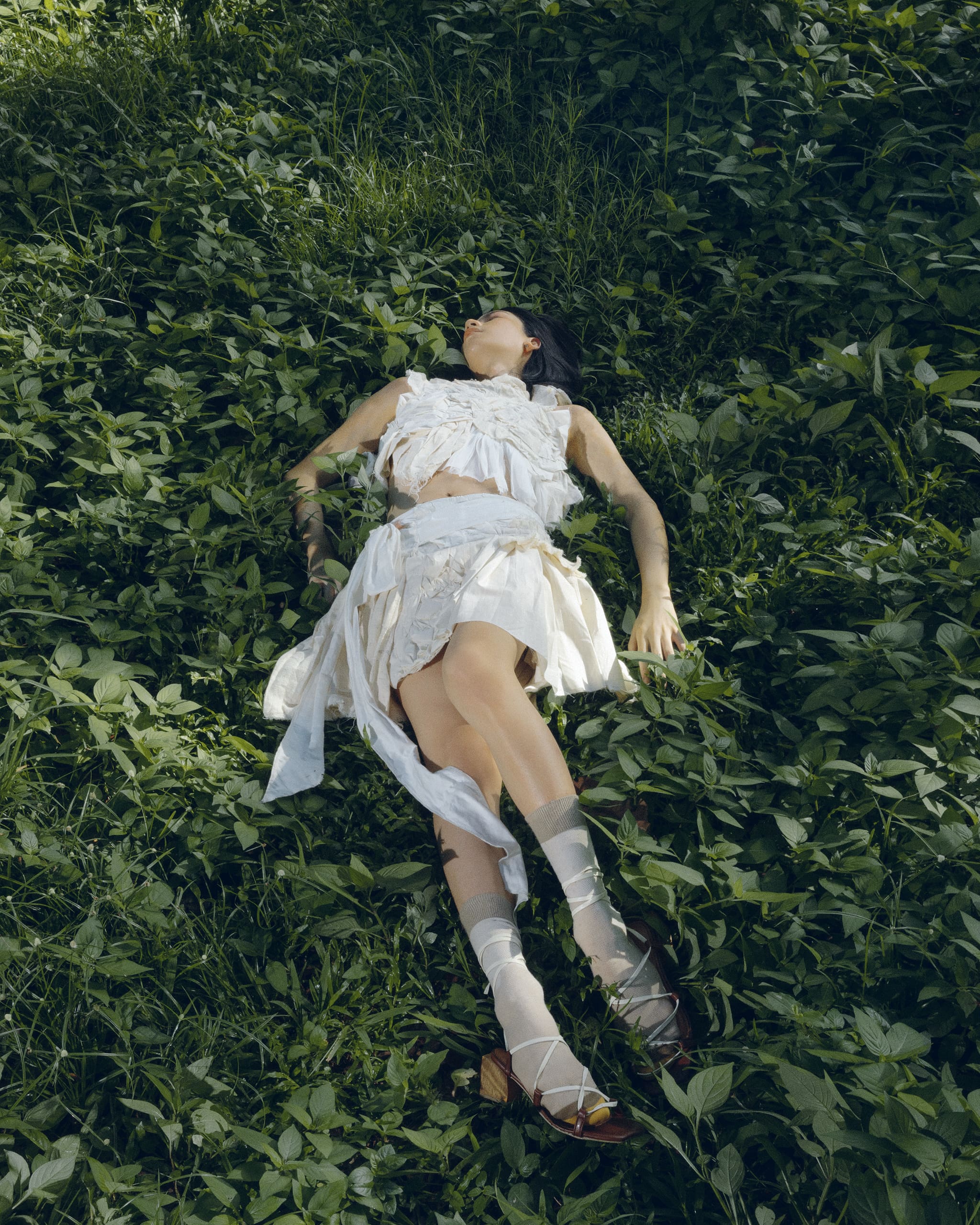Carl Jan Cruz collaborated with Bayo for a Vogue Philippines exclusive design made out of Bakong textiles.
How one successful retailer in the Philippines is advancing the circularity movement with a regenerative fabric.
It’s been 30 years since the launch of Bayo, one of the country’s most well-known fashion brands, and eight years since Leo and Anna Lagon acquired it.
Bayo was homegrown before it was even cool to be homegrown. Now, the Lagons are adding a whole new dimension to the term homegrown, regenerative fashion.
Regenerative fashion considers all the different processes involved in creating a piece of clothing. It transforms its supply chain into a value chain and along the way, refashioning clothing into a resource rather than an eventual waste product.
Along its supply chain, any kind of fabric still leaves an environmental footprint. While not typically a word you’d associate with fashion, “regenerative” is becoming part of the conversation on circularity. When it comes to the fashion industry, it is seen as a major way to mitigate the harm caused by the tons and tons of clothes that are produced every day.
Bayo is one of the country’s largest fashion companies with its own manufacturing arm. For Anna, her team and the Bayo Foundation hoping to lead the way in developing regenerative practices in the country is nothing short of inspiring.
Their most recent initiative involves the Bakong fabric, which is both a natural and potentially circular material.

In Anna’s words, developing the fabric was an organic process in more ways than one. The Design Center of the Philippines contacted Anna after they had discovered a lake area in Santa Teresita, Cagayan, where they wanted to build a tourist venue.
However, building became a challenge when the Bakong plants (Hanguana malayana) in the lake area were rapidly becoming invasive. Anna and the DCP decided to do research and development on the Bakong plant to determine what, if anything, could be done with it for the fashion industry.
“We started working with the raw fiber, which I requested them to process into threads,” Anna tells Vogue. “The threads were then given to the Bayo Foundation and we tapped our adopted community inside the Gawad Kalinga compound in Bulacan to hand weave the threads.”
She combined it with Philippine cotton and produced a unique pattern for the textile. “We were then able to prove that, indeed, we can successfully convert the Bakong plant fiber into threads and the threads into fabric,” Anna tells Vogue.
Anna even went to the extent of having the Bakong fabric dyed through an Oeko-Tex certified process. She says, “It’s something we’re conscious about—to present a material that also has a certification to prove that it’s good for your skin, it’s good for your body, and will not harm you.”
It’s clearly a painstaking process that Anna and her team are unafraid to undertake. “What also drives me is that I can tell you a thousand meaningful stories that are woven and stitched together in every piece of garment that we produce,” she explains. Call it soil-to-garment fashion with meaningful stories woven throughout.
Fortunately, Anna is more than willing to not only share these stories but to share her discoveries. When it comes to sustainability, she firmly believes that it’s important to impart her findings for everyone to benefit from them.
Exclusive Collaboration
These stories and sense of community spoke to Filipino designer Carl Jan Cruz, who was eager to try his hand on the Bakong fabric.
“I met with Anna personally and it was inspiring to learn about her commitment to research and development, which seems to be a rarity, ,” says Carl Jan. “It went beyond just merchandising.”
Carl Jan translated the techniques that he’s become known for, developed from his studies at Central Saint Martins and during his time as an intern at Céline, to create a look made with Bakong fabric.

Multiple wash tests, press tests, and stitch tests were required. After which the designer brought the fabric to life with a top and a skirt that reflect the rawness of the material through the intricacy of discordant pleats, intentionally incongruous quilting, and unrefined seams.
“The garments balance the complexity of the textile and the techniques that are familiar to our audience,” he explains, “but at the end of the day, they still give the feeling of easy wearability and function.”
Despite Bakong fabric being an experimental textile that Carl Jan had never seen before, he’s clearly happy with the outcome of the collaboration. What began as an open conversation and a blank canvas has not only led to the crafting of a uniquely homegrown ensemble, but it has also opened a path for further development and broader use for the fabric.
Since Anna and Leo took the reins as Bayo’s co-CEOs, they’ve been steering it along a road that had become exceptionally bumpy during the pandemic. However, Anna says, “instead of looking at it as a reason to step back, we used it as a big source of motivation for us to do something better.”
They forged ahead not only by going circular but by establishing new partnerships, launching initiatives, and empowering all their stakeholders. “It’s not just the brand but what the brand can do for others that matters,” she emphasizes. “I feel I have this responsibility to give back because nature has been very kind to us.”
In 2020, Bayo was the first Filipino fashion retail brand to become a member of the United Nations Global Compact (UNGC), a UN network of global companies that are dedicated to sustainable and responsible business practices. More recently, Bayo was awarded Champion for Gender Responsive Marketplace both in the Philippines and the Asia Pacific region at the 2021 Women Empowerment Principles (WEP) Awards by UN Women and the European Union.
Alongside developing the Bakong fabric, Bayo has begun making their products carbon neutral. When you purchase from Bayo, the carbon emissions of the product and its equivalent financial value are computed. The amount is then donated to three carbon off-setting programs. Regenerative fashion is all part of Bayo’s journey to zero: zero waste, zero carbon emissions, and full circularity.
Bayo also has a new end-of-life facility that will extend the life of synthetic fabric waste and single use plastics, converting them into fire retardant construction materials. Not only is Bayo’s new store made using this material, but it’s proven to be strong enough to use for building small homes. This, Anna feels, would be particularly useful given the many natural calamities the Philippines experiences.
In many ways, it is Bayo’s version of nation building. As Anna tells Vogue, “Sustainability is like building a new world, a world that is filled with opportunities.”
This story originally appeared in Vogue Philippines September 2022 Issue
